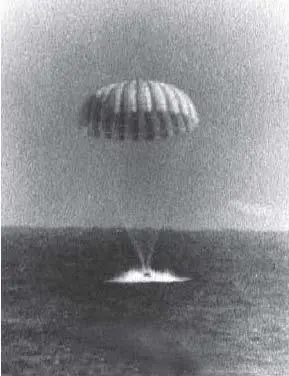IN THE 1980 London stage version of The Elephant Man , Joseph Merrick commits suicide [30] Merrick scholars disagree as to whether it was suicide or accident, but they do agree on his true first name, which was in fact Joseph, not John. The London production, as I seem to recall, used the more widely known “John,” perhaps to avoid amending the program with a footnote, as I’m having to do. While I have you here, I’ll tell you that David Bowie played Merrick. He wore no makeup or prosthetics and almost no clothes. He held himself crooked, just as Merrick had been, and broke your heart.
by lying down on his bed and allowing his grotesquely enlarged head to hang over the edge and crush his airway. It was suicide by gravity. His head had grown so heavy that his neck muscles could no longer lift it. For 20 seconds at a time, I’ve been feeling what that’s like. When the C-9 pulls out of its downward dive to begin another climb, we are accelerated into the floor with the force of approximately 2 G’s, twice the Earth’s gravity. My head suddenly weighs 20 pounds, not 10. Like Merrick, I’m lying on my back—not to kill myself, but because I’ve been told this lowers the odds of becoming nauseated. It’s very strange. I can’t pick my head up off the floor of the plane.
I read somewhere that a beached whale will die from an overdose of gravity. Out of the water that normally buoys them, their lungs and body weigh so much that they collapse in on themselves. The whale’s diaphragm and rib muscles aren’t strong enough to expand its lungs and raise the now far heavier blubber and bone that press in on them, and the animal suffocates.
Aerospace researchers in the 1940s figured out a way to mimic excess gravity here on Earth. A rat or rabbit or chimp or, eventually, a Mercury astronaut, would be placed at the end of a long, spinning centrifuge arm. Centrifugal force accelerates body parts and fluids outwardly, away from the center of the centrifuge. As we learned and most likely forgot in chapter 4, gravity is simply your rate of acceleration. So, to mimic standing erect in excess gravity, a researcher would have subjects lie with their feet at the outside end of the spinning arm. The faster the centrifuge spins, the heavier grow the subject’s organs, bones, and body fluids.
You can see what a rat’s organs look like inside its body at 10 G’s and 19 G’s by tracking down the February 1953 issue of Aviation Medicine and opening to p. 54, but I don’t recommend this. A team of Navy commanders at the Aviation Medical Acceleration Laboratory figured out an ingenious and horrific “quick-freeze technique,” whereby anesthetized rats were immersed in liquid nitrogen while riding a centrifuge. The now nineteen times heavier blood in the heart has pooled at the bottom of the organ and weighed it down, elongating it like a wad of stretched Silly Putty. The abdominal organs are packed down into the pelvis like sandbags, the head has sunk down into the shoulders, and I don’t even want to talk about the testicles. A second photograph shows the rat facing the other way around—its head at the outer end of the centrifuge arm. The extraheavy organs are now in a pileup under the rib cage, crushing the lungs and leaving the rest of the torso bizarrely empty.
The commanders were not simply entertaining themselves. The early aeromedical scientists studied the human tolerance limits for excess gravity in order to learn how to protect fighter pilots and, later, astronauts. Jet pilots are subject to as many as 8 or 10 G’s as they pull out of steep dives and execute other high-speed maneuvers. Astronauts endure a few seconds of double or triple gravity during liftoff, and as many as four and sometimes more extra G’s when their spacecraft reenters Earth’s atmosphere on the way down. Going from the airless vacuum of space into a wall of air molecules slows their craft from 17,500 to a few hundred miles per hour. As in any abruptly slowed vehicle, the occupants are hurled forward in the direction of travel. What’s dangerous about reentry is that the hurling—the period of doubled or quadrupled G forces—lasts for up to a minute, as opposed to the split-second duration of a car crash.
How many excess G’s the human body can tolerate without injury depends upon how long it’s exposed. For a tenth of a second, people can typically hack between 15 and 45 G’s, depending on what position they’re in relative to the force. When you get up into the range of a minute or more, tolerance drops alarmingly. Your heavy blood has enough time to pool in your legs and feet, depriving your brain of oxygen, and you black out. If it goes on long enough, you die. At 16 G’s, wrote John Glenn of his flight-training experience on the NASA centrifuge, “it took just about every bit of strength and technique you could muster to retain consciousness.” This is why astronauts lie down during reentry—so the blood doesn’t pool in their legs and feet. But on your back, you are the whale on the beach. There is pain beneath the breast-bone. Inhaling is a struggle. During a Soyuz reentry that went awry, ISS Expedition 16 commander Peggy Whitson endured an overly steep, overly fast reentry and a full minute in 8 G’s, about double the normal hypergravity of reentry. Astronauts are taught, on the centrifuge, how to deal with this—to take quick, shallow panting breaths so the lungs never fully deflate and to inhale using the stronger muscles of the diaphragm, not the smaller muscles attached to the ribs. Even then, Whitson found it a struggle.
The human arm weighs, on average, nine pounds. That means that for the duration of reentry, Peggy Whitson’s arm weighed 72 pounds. In the words of aerospace medicine pioneer Otto Gauer, “In general, only wrist and finger movements are possible above 8 G’s.” Meaning that an astronaut could perish because she can’t raise an arm to reach a control panel. Whitson plays down the dangers. But a few weeks after I spoke to her, I met a flight surgeon who showed me photographs taken shortly after the incident. She looked, to use his word, “wasted.” The next photo he showed me was of the crater in the dirt where the Soyuz capsule hit the ground. It looked like someone had tried to build a swimming pool out in the middle of the Kazakh Steppe.
Coming down is as scary as going up.
7. THE CADAVER IN THE SPACE CAPSULE
NASA Visits the Crash Test Lab

SPLASHDOWN
Crash simulation is a world comprised largely of metal and men. The simulator at Ohio’s Transportation Research Center resides in a clanging, hangar-sized room with few places to sit, and none of them upholstered. The room holds little beyond the crash sled, on a track down the middle, and a few engineers in safety goggles, forever walking back and forth with coffee mugs. Other than the reds and oranges of warning lights and hazard signs, color is hard to find.
The cadaver seems almost a homey touch. Subject F wears blue Fruit of the Loom underpants and no shirt, as though he were lounging around in his own apartment. He looks deeply relaxed. As dead men do. Are. He slumps slightly in his chair and his hands rest on his thighs. Were F alive, he would not be so relaxed. In a few hours, a piston as fat as a redwood will shoot a slug of pressurized air at the seat in which he’ll be strapped. Both the force of the impact and the position of the seat can be adjusted to create whatever crash scenario a researcher requires: a head-on into a wall at 65 miles per hour, say, or one car broadsiding another going 40. Today it’s NASA’s new Orion capsule, dropping from space onto the sea. F gets to play astronaut.
Читать дальше













